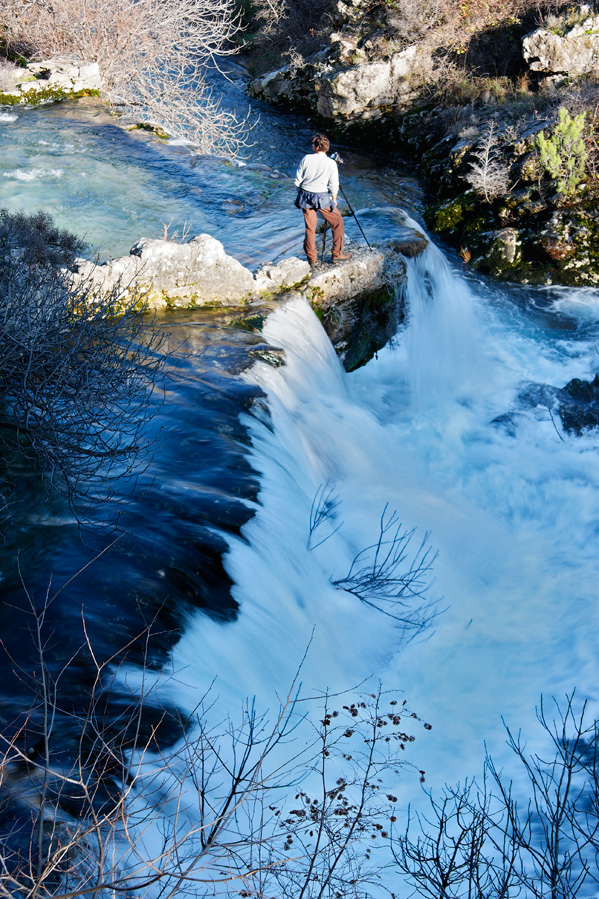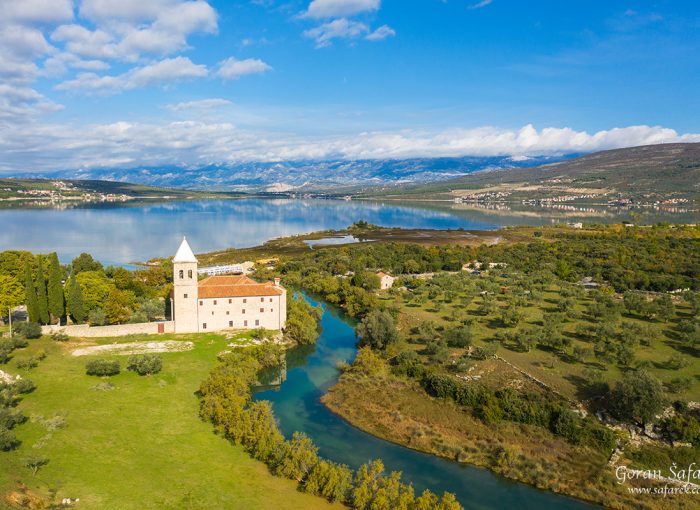The Karišnica River is a short but beautiful river that joins the Adriatic Sea in the Zadar region.
Because it has no major tourist centre, the Karin Sea in Zadar County is a lesser-known part of the Adriatic coast. The sea has penetrated the mainland via a long, narrow channel you’ll see while driving across the Maslenica Bridge. The first widening is at the village of Novigrad, hence the name the Novigrad Sea. There comes another narrow channel, after which the sea widens again and becomes the Karin Sea. In the summer, the village of Karin is buzzing with tourists and boats. Besides enjoying the hustle and bustle, walk to the bridge and the Monastery of St. Mary Immaculate.
Featuring the pre-Romanesque Croatian interlace pattern, a stone cross on the wall of the hallway of the Monastery of St. Mary Immaculate bears witness to what history calls the age of Croatia’s rulers. The Franciscans arrived here in the 15th century and survived the Ottomans.
Here, in the safety of the monastery, children learned to write, and a small yet valuable library was set up. Having been reconstructed after the Homeland War, it stands tall near the Karin Sea, with the Velebit Mountain Range rising in the distance.
The monastery was built at the mouth of the Karišnica River, across which a bridge was also built. The river has been depositing sediment for millennia, creating a small delta called Tuvina, where wetland plants grow. These include soft rushes, glassworts and other salt-tolerant species and are only a tiny fraction of the total 350 plant species that biologists have listed along Karišnica’s entire watercourse.
Tuvina’s wetland mud attracts many birds, some one hundred species, to be precise. The vast majority are wading birds − they wade through the mud with their long legs and feast on worms and other small animals with the help of their long beaks. In fact, this salt marsh is teeming with life. To observe it, all you have to do is stop for a few minutes.
To get to the source of Karišnica from its mouth, set aside an hour or two. The river’s entire watercourse is easily accessible to everyone − it’s as little as 2400 metres long and slopes only very gently because the source is as little as some twenty metres above sea level. You can take a beautiful path along Karišnica’s watercourse, from source to mouth.
While a fragrant pine forest surrounds its upper course, its lower course is dominated by olive groves and meadows. Karišnica’s lower course is wide and influenced by the tides, its brackish water and boasts islets of aquatic plants. By contrast, the riverbed narrows as you move away from the sea, and its waters start to flow. It even creates small rapids and tiny waterfalls. In places, Karišnica chiselled small vales boasting proper canyon cliffs where Eurasian eagle owls nest.

Besides savouring the burbling of water down small waterfalls, absorbing beautiful landscapes and spotting birds, you’ll also see old mills along the river; that is, sadly, what today remains of them. Four smaller mills were once built along Karišnica that served all the region’s people.
This is where they’d grind their grain − in a time without electricity or petrol. The demand was so great that people used to have to wait up to a year for their turn to have their grain ground. Alas, bare walls and the millstones’ ruins are the only remains of the mills today, reminding us of a bygone age.
A stunning stone bridge and the roar of large waterfalls announce the crescendo of Karišnica. The fifth, largest, and most beautiful mill was built at the source, where the largest waterfall is. Indeed, the ambience is reminiscent of the Krka waterfalls and its mills.
The legacy of Maria Theresa of Austria from the 18th century, today they’re out of use, roofless, and gaping open at the sky. The spring of Karišnica is right behind the waterfalls and inside a 120-metre-long cave of the same name.
What may surprise you in the summer are the dry rocks of Karišnica’s riverbed without a single drop of water. The source dries up, which is not an uncommon occurrence in arid karst landscapes, and is the consequence of very low levels of rainfall in the summer season. However, it’s a chance for you to explore the cave that Karišnica wells from.





